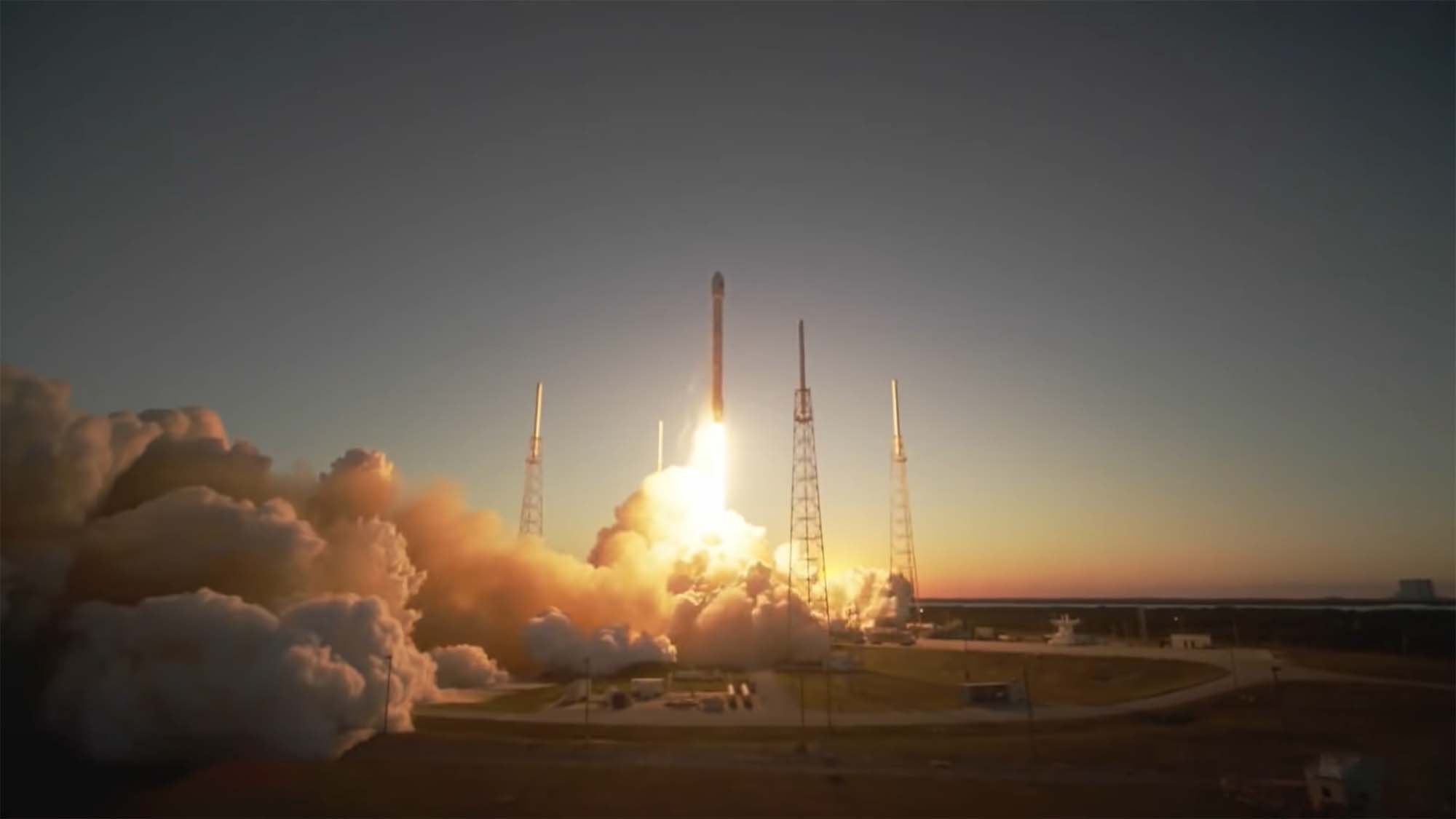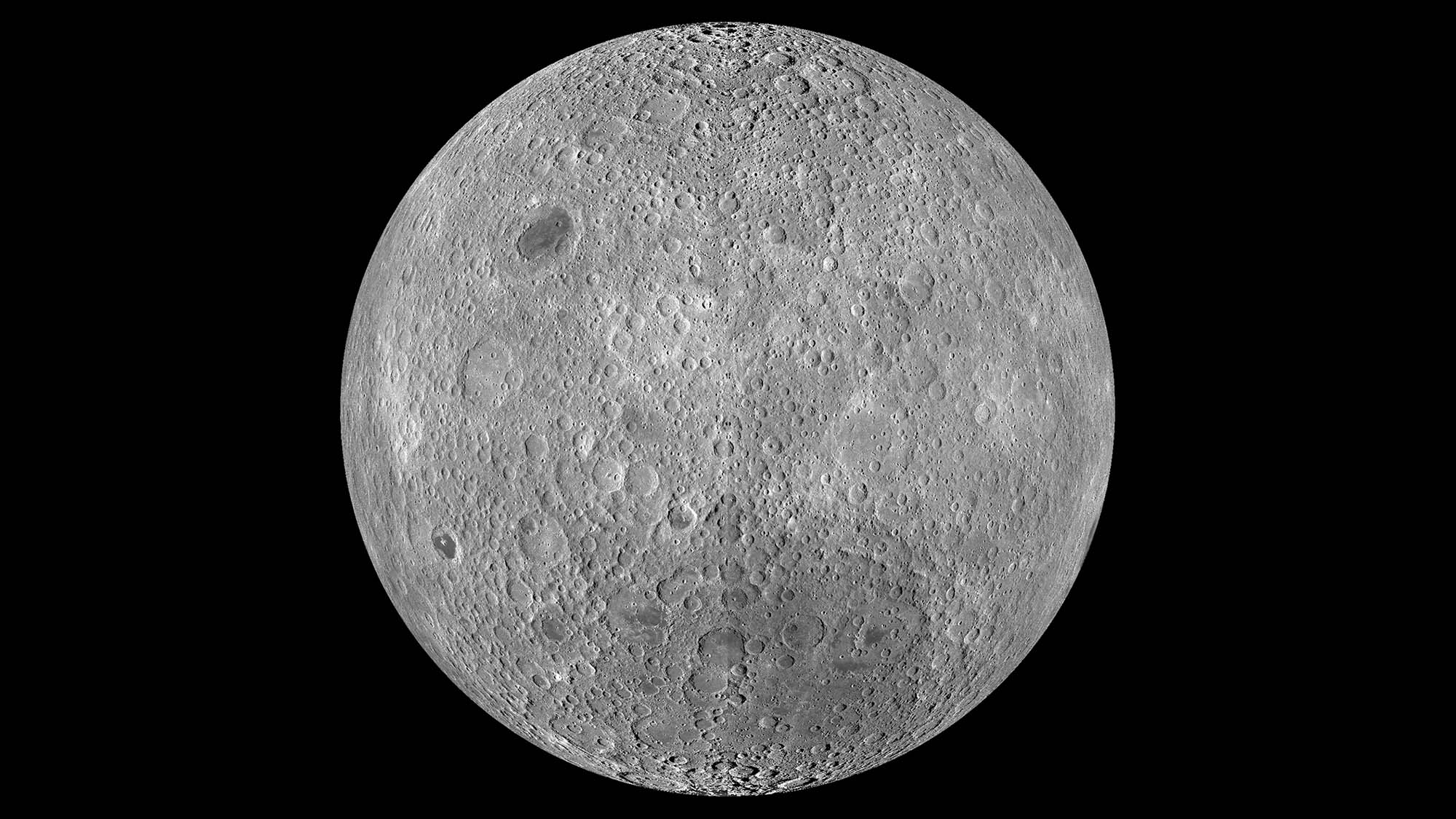A piece of SpaceX space junk is about to hit the Moon – but it might actually be helpful
Selenologists might get a helping hand from a space junk collision

The upper stage of a SpaceX Falcon 9 rocket is on course to hit the far side of the Moon in March, and it might not actually be a bad thing.
Normally, when space junk hits something, it's a cause for concern, and no one can say that leaving a bunch of space trash on another world is a good thing. But in this case, the impact might actually help scientists learn something about the Moon.
What's on track to hit the Moon is the part of the Falcon 9 rocket that launched on February 11, 2015 that boosted a NOAA satellite on a path to reach the second Lagrange point, similar to the upper stage of the Arianespace rocket that sent the James Webb Space Telescope on its way to the same point in space.
Most upper stage rockets segments typically reserve enough fuel in them to return to Earth (where they burn up in Earth's atmosphere) or they boost themselves into a heliocentric orbit so they won't pose a threat to low Earth orbiting structures or satellites.
This SpaceX rocket didn't have enough fuel for either though, so it has been caught in orbit under the combined influence of Earth and the Moon's gravity ever since, tumbling through space along with us as we do laps around the Sun.

To be clear, the upper stage rocket segment has never and will never pose a threat to anyone on Earth. Still, it is now a near-Earth object, so it caught the attention of citizen scientist, Bill Gray.
Gray wrote the software for Project Pluto that tracks near-Earth objects, and he has worked out that the orbit of this upper stage rocket segment. According to his calculations, the segment's orbit is going to intersect that of the Moon's sometime on March 4 and impact somewhere near the equator on the Moon's far side.
Get daily insight, inspiration and deals in your inbox
Sign up for breaking news, reviews, opinion, top tech deals, and more.
"At a guess, the above prediction may be wrong by a few kilometers and second from the predicted time," Gray writes. "We'll need (and I am confident will get) more observations in early February to refine the prediction; that will bring the uncertainty down greatly."
The object in question weighs about 4 metric tons, according to Ars Technica, and is travelling at 2.58km/s. Upon impact, the explosion should release the energy equivalent of about 3 tons of TNT, given that there is no atmospheric interference to slow the rocket segment down.
This isn't a whole lot of explosive energy. For context, the ammonia nitrate explosion in Beirut in August 2020 produced about an energy equivalent to 1,155 tons of TNT.
Analysis: ok, so how does this help science?
Ah, we're glad you asked. While we won't get to see the impact from Earth, we do have a couple of satellites in orbit around the Moon, namely NASA's Lunar Reconnaissance Orbiter and India's Chandrayaan-2, both of which should be able to make observations about the impact crater.
With a 3 tons of TNT blast, that should carve out a good chunk of the surface material on the moon, giving us a rare look at some of the subsurface material underneath.
This will help selenologists (like geologists, but for the Moon) study the composition of the Moon's surface material in greater detail than is typically possible with older impact craters.
While it's definitely not ideal to have space junk hit anything, at least we will get something out of this one, possibly even images of the impact as it happens. Either way, we really do need to be a lot more mindful of how much stuff we're putting up there, since these kinds of impacts aren't always going to be so harmless.

John (He/Him) is the Components Editor here at TechRadar and he is also a programmer, gamer, activist, and Brooklyn College alum currently living in Brooklyn, NY.
Named by the CTA as a CES 2020 Media Trailblazer for his science and technology reporting, John specializes in all areas of computer science, including industry news, hardware reviews, PC gaming, as well as general science writing and the social impact of the tech industry.
You can find him online on Bluesky @johnloeffler.bsky.social